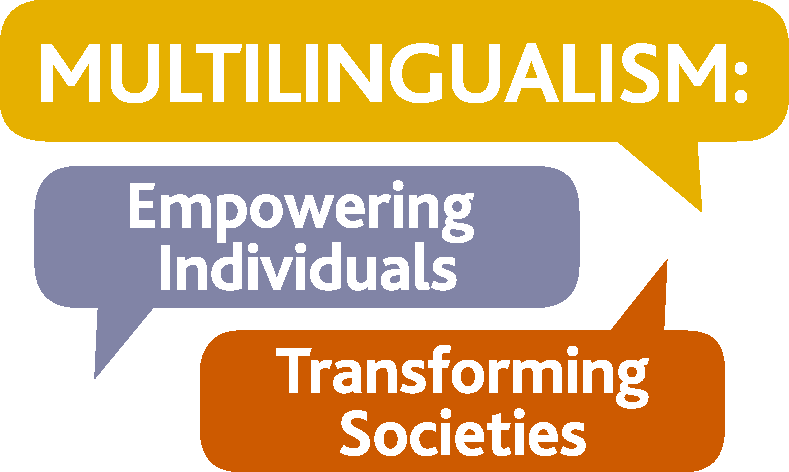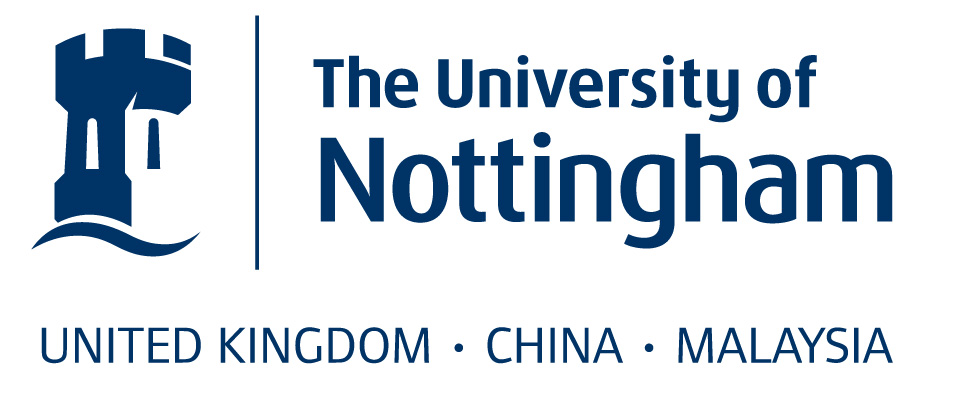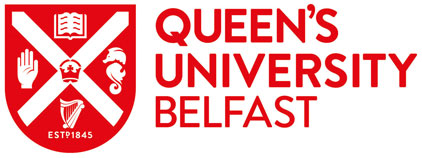Current needs and provision for multilingual interpreters in Manchester
This paper draws on research carried out in Manchester, UK – a post-industrial city that has over the past decades declared itself to be welcoming of migrants, recognising the benefits that they bring, and committed both to equality and to drawing on its ‘diversity dividend’ for growth and development. While Manchester’s language diversity is not unusual for global cities, the density of its multilingualism is striking: some 200 languages are spoken by a population of around half a million people. Almost 40% of Manchester schoolchildren are registered as having a language other than English as their ‘first language’ (up to 95% in individual schools), with up to 55 different languages spoken by pupils in a single school. The Greater Manchester city-region shows a similar profile. In recent years, Manchester’s Investment and Development Agency (MIDAS) ranked language skills among the city-region’s top five strengths that attracted external investors.
Current provisions for languages to ensure access to services include a translations and interpreting service that is situated within the City Council, M-Four, which draws on both in-house and contracted staff. It typically handles upwards of 10,000 requests for interpreting every year, serving local agencies as well as private clients with a business model that is self-sustaining. The service also issues multilingual leaflets that accompany city council publications (albeit on an irregular basis) and which advise residents of a telephone line through which they can receive an oral translation of the English text into a variety of languages.
Key public services such as Greater Manchester Police, hospitals and GP practices, Jobcentre Plus, and Social Services rely on private contractors, who engage speakers of a large variety of languages on a part-time basis for both face-to-face and remote telephone interpreting. Contractors make general statements about the training that they provide, though for the most part we have not been able to establish that there is always strict control of qualifications. The local health care sector responds to over 100,000 requests for interpreting in the city of Manchester every year. Of those, some 16,000 come from local GP practices, which in addition rely heavily on so-called ‘casual’ interpreting through patients’ friends and family members. The hospital environment is generally stricter in applying constraints on casual interpreting, insisting instead on the use of professional interpreters especially in clinical consultations.
Central Manchester Hospital Trust alone processes up to 40,000 such interpreting requests every year, for around 100 different languages, with a budget of around £1 million. The Trust operates a unique combination of an in-house service that employs around 10 staff members, and an external provision that is shared between two private contractors. This setup offers the institution the flexibility that is needed in order to respond to fluctuations in demand, which show year on year changes of up to 5% in total, with changes of up to 40% for individual languages. The past few years (from 2013 onwards) have seen a significant increase, for example, in demand for Arabic, while a decrease has been noted for some eastern European languages. The latter can be assumed to reflect not just population movements but also gradual expansion of English language skills among immigrants, who then become less reliant on interpreting provisions. This is an important insight that challenges the view that interpreting provisions act as a disincentive for immigrants to acquire English. In fact, the availability of interpreter provisions appears to encourage engagement with, and confidence in public services, thereby facilitating integration and acquisition of English.
The analysis of interpreting requests in individual hospital departments also reveals demographic trends. In 2014, for example, interpreter demand in Central Manchester Hospital’s cataract unit was high for Hakka Chinese, Gujarati and Panjabi, while demand in the sexual health unit was high for Hungarian, Spanish, and Romanian. While individuals’ dependency on interpreting and translation tends to be transitional, the dynamics of constant population changes mean that language provisions must remain a permanent fixture of key public services and that they therefore require long-term strategic planning. This means that institutions require a commitment to and a reliable method for regular data compilation and data analysis to establish which languages are needed for interpreting and translation, and in which sectors or even specific departments or services; and that ways should be found for such data monitoring to be coordinated among various institutions at local level.
Current provision for learning and maintaining community languages
Active support for developing and maintaining language skills is limited to library provisions. Manchester libraries currently have a stock of around 25,000 items in languages other than English; a total of around 70,000 issues a year indicate that there is considerable demand for these resources. New items are generally purchased in response to individual requests rather than on the basis of a regular review of stock by library staff. Language skills are taught at a number of cultural institutions and by the city’s higher education institutes. Around 3,000 pupils in Manchester currently take GCSE exams in foreign languages every year, mostly in French, German and Spanish, but also in Arabic, Chinese, Polish and Hebrew. Several dozen community-run supplementary schools operate in Manchester, offering teaching and in some cases also formal qualifications in community languages. Several thousand pupils attend such weekend schools on a regular basis, taught largely by volunteers. Most supplementary schools rely on fees of between £30–£300 a year per pupil, and only some receive grants from foreign governments. In the past, Manchester City Council provided an occasional networking forum for supplementary schools and tokenistic grants of around £200; however, in recent years it has largely disengaged from this sector.
Our research in Manchester schools identified various ways in which communities make efforts to maintain languages across generations. Children report using their home languages primarily with their parents, but they also use them, alongside English, with their siblings. The shift from cross-generation bilingualism to monolingualism within the young generation is thus neither inevitable nor generalizable. High proficiency in the home language often correlates with attendance in community-run weekend schools and with exposure in the home to media and literacy in the home language, though for some communities, where non-standardized regional and minority languages are spoken, such as Romani or Bravanese, language loyalty is an important symbol of family loyalty. Overall, high proficiency in the home language was found to correlate with high proficiency in English, debunking the myth that home language maintenance is a hindrance to learning English.
Implications for planning and policy
Although Manchester’s policy narrative places value on language skills as a workforce resource that is vital to economic growth, the promotion of community languages is mainly a community-based initiative. Public visibility of languages relies in turn almost entirely on the local commercial sector: Manchester’s streets feature hundreds of signs in over fifty different languages, mainly on local retail establishments and on cultural institutions. With the exception of the health sector, which occasionally makes use of multilingual posters and leaflets, very few multilingual signs are put up by public institutions such as the local authority, and most of these tend to be regulatory in nature, containing prohibitions that target particular communities around specific issues in certain areas. For example, Asian and Middle Eastern languages (Urdu, Arabic) often appear on signs in parks advising visitors not to feed birds, while Eastern European languages (Polish, Lithuanian, Hungarian) appear on signs that advise on angling regulations.
Our observations in Manchester show a patchwork of ‘micro-level’ planning or decision-making processes at the level of individual, local institutions, rather than a single top-down, scripted policy. ‘Policy’ and ‘Planning’ in this context therefore mean the process of empowering individual agents to take decisions on options and on the use of resources. However, the lack of a holistic picture of language needs and available resources makes it difficult for individual local agents to plan provisions. This means that activities remain responsive, and ‘planning’ is often limited to the short-term allocation of resources and is often devoid of longer-term strategic considerations.
In order to alleviate these difficulties, an approach is needed that combines innovative data collection and assessment methods, with measures to help build confidence among agents in order to help them shape a strategic vision for the management of language diversity. Current data collection tools suffer from the inadequacy of being framed largely within a ‘monolingual mindset’: the 2011 Census was the first to ask a question about languages (other than Welsh), but the question ‘What is your main language?’ is a subjective one and does not offer an accurate measure for comparison. Many respondents under-reported home languages and named instead the national language of their country of origin, or else indicated English as the ‘main’ language that they use most hours of the day, in professional capacity or for literacy. Clearly under-reported on the Census are languages like Romani (29 speakers in total for Manchester), Caribbean Creole (13), and Yiddish (5), among many others. By contrast, one respondent each indicated Manx and Cornish as their ‘main language’, evidently an expression of their commitment to revivalist activities. The ambiguity of the 2011 Census data becomes evident when one compares the total number of languages listed for Manchester, which is 67, with the total number of languages listed for Manchester on the 2011 School Census, which is 152. But even the School Census under-reports what it calls ‘first language’, allowing space for just a single language, thereby ignoring family multilingualism, and in general focusing only on those with anticipated problems in English proficiency. An improvement of these tools is necessary in order to take into account users’ complex linguistic repertoires and the fact that many individuals use a variety of languages in different settings and for different purposes. In addition, tools and procedures are needed to be able to triangulate datasets and identify patterns and needs. This gap is best filled through collaboration between researchers and policy makers; the policy challenge here is to firstly recognize the need for such collaboration, to take the necessary steps to facilitate it (by setting up fora for discussion and planning), and to ensure that local institutions adopt and comply with a certain standard of data compilation and data monitoring, and with certain standards for the delivery of language provisions.
The inadequacy of planning rests partly on the failure on the part of public institutions to show a firm commitment to language provisions, at all different levels. For many years, public debate in the UK has been overshadowed by linguaphobia, with politicians calling on parents to abandon home languages, complaining about support for languages and interpreting and suggesting that it discouraged the learning of English, and even linking home language maintenance to radicalization. A different public narrative is required to counteract such trends and to de-pathologize multilingualism.
The role of the civic university
Universities have an important role to play to design new data collection tools and to set standards for the monitoring and assessment of data, to provide more insights into people’s everyday employment of linguistic repertoires and to promote a positive public narrative about multilingualism. At the University of Manchester, we set up the Multilingual Manchester initiative in 2010. It operates a somewhat exceptional and unique model that brings together undergraduate and postgraduate teaching and high-impact research with public engagement and outreach, including a university-wide student volunteer scheme and various co-production initiatives with external stakeholders. In partnership with local schools, we developed a method to identify and assess pupils’ home languages that alleviates some of the inadequacies of the official School Census. Working with Greater Manchester Police, we analysed client reactions to letters and produced guidelines for smoother communication, which are currently being implemented. In 2016 we produced an extensive report in partnership with the NHS Clinical Commissioning Groups into interpreting provisions in central Manchester hospitals and primary care, assessing an innovative model of networking partnership, and in early 2017 we set up the Supplementary School Support Platform to provide support with curriculum enrichment and teacher training. We’ve launched a mobile application – LinguaSnapp – to document the city’s multilingual landscapes and what they reveal about the use of language repertoires in commerce and the forging of inter-community ties. The project has been a broker of dialogue among key stakeholders in the city, and is offering students and citizens opportunities for a positive engagement with the city’s language diversity through public events, audio-visual productions, social media and online archiving of reports.
Cities of the future will rely on networks of cooperation and pooling and sharing of expertise, insights, and data. Language ‘policies’ as we have known them so far – top-down regulatory frameworks that take decades of political lobbying to construct, are costly to implement, and often remain symbols of power relations that lose touch with actual demand and everyday needs – must give way to dynamic spaces of collaborative practice. The dynamism and rapid pace of urban change mean that cities are ill-equipped to legislate when it comes to language practices. Instead, they should lead networks of public institutions and civil society around a shared commitment to methods and values. With an agenda of high-impact and socially engaged teaching and research, the civic university must be a key partner in this process.
Resources
Multilingual Manchester website: http://mlm.humanities.manchester.ac.uk
Further reading
Amin, Ash and Nigel Thrift. 2017. Seeing like a city (Cambridge: Polity Press)
Gaiser, Leonie and Yaron Matras. 2016a. Language provisions in access to primary and hospital care in central Manchester. (Manchester: University of Manchester).
Gaiser, Leonie and Yaron Matras. 2016b. The spatial construction of civic identities: A study of Manchester’s linguistic landscapes (Manchester: University of Manchester)
Matras, Yaron. 2016. ‘The case against linguaphobia’, Manchester Policy Blogs
Matras, Yaron and Alex Robertson. 2015. ‘Multilingualism in a post-industrial city: policy and practice in Manchester’, Current Issues in Language Planning 16: 296–314
Matras, Yaron, Alex Robertson and Charlotte Jones. 2016. ‘Using the school setting to map community languages: a pilot study in Manchester, England’, International Journal of Multilingualism 13: 353–366
Please cite: Matras, Y. (2017). Can global cities have a language policy?. Languages, Society & Policy https://doi.org/10.17863/CAM.9800
“;}}






